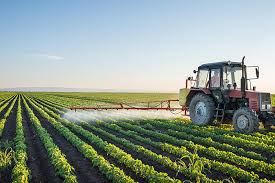As of July 2025, climate change has become an undeniable force shaping the landscape of agriculture in Canada. Rising temperatures, shifting precipitation patterns, and the increasing frequency of extreme weather events are having profound effects on how Canadian farmers grow food and manage their land.
With agriculture forming a vital part of Canada’s economy and food supply, understanding the consequences of climate change is critical for developing sustainable solutions and maintaining national food security.
Changing Weather Patterns and Crop Yields
One of the most visible impacts of climate change in Canadian agriculture is the shift in weather patterns. Warmer temperatures have extended the growing season in many regions, allowing some farmers to grow new types of crops, such as soybeans and corn, farther north than before.
However, this extended season comes with downsides. Unpredictable frosts in spring and fall, late snowmelt, and heatwaves can damage crops during critical stages of development. In provinces like Alberta and Saskatchewan, these fluctuations have made crop yields increasingly inconsistent from year to year.
Farmers are now investing more in crop insurance, irrigation systems, and weather-monitoring technologies to mitigate the risks associated with this volatility.
Droughts and Water Scarcity
While some parts of Canada may see more rainfall due to climate change, others are experiencing prolonged periods of drought. Western Canada, especially southern Alberta and interior British Columbia, has been hit hard by reduced snowpacks and longer dry spells.
Water scarcity limits the growth of water-intensive crops and reduces the availability of water for livestock. It also puts pressure on local water management systems and increases the risk of conflict over water use between agricultural, urban, and industrial stakeholders.
In response, farmers are turning to drought-resistant crop varieties and investing in efficient irrigation methods such as drip systems and soil moisture sensors to conserve water resources.
Flooding and Soil Erosion
At the same time, certain regions are facing increased rainfall intensity, which leads to more frequent flooding. Flooded fields delay planting and harvesting, damage equipment, and wash away nutrient-rich topsoil.
In low-lying areas like Manitoba’s Red River Valley, repeated spring flooding has forced farmers to adopt new flood management strategies. These include raised planting beds, improved drainage infrastructure, and the restoration of wetlands to absorb excess water.
Soil erosion caused by heavy rains not only reduces productivity but also leads to greater use of chemical fertilizers to restore depleted nutrients, posing risks to both the environment and human health.
Pest and Disease Pressure
Warming temperatures and milder winters are enabling pests and plant diseases to thrive in regions where they were previously uncommon. For instance, the spread of armyworms and soybean aphids into central Canada has intensified over the past few years.
This trend increases the need for pesticide use and complicates integrated pest management practices. At the same time, higher humidity levels create favorable conditions for fungal infections, which can devastate cereal crops.
Farmers now must adapt by adopting crop rotations, using disease-resistant seeds, and staying informed through agricultural extension services and AI-powered pest prediction tools.
Shifts in Livestock Production
Livestock farming is also being affected. Heat stress in cattle, poultry, and pigs can reduce fertility rates, lower milk production, and increase mortality. Rising feed costs and fluctuating forage availability during droughts make livestock management more expensive and unpredictable.
Producers are modifying barns to improve ventilation and cooling and altering feeding schedules to accommodate hotter temperatures. In some cases, farmers are even switching from traditional livestock to smaller, more heat-tolerant breeds better suited to changing conditions.
The Canadian government is offering subsidies and research grants in 2025 to support these adaptations and protect animal welfare.
Economic Impacts on Farmers and Rural Communities
The economic toll of climate change on Canadian agriculture is significant. Crop losses, infrastructure damage, and rising insurance premiums cut into profit margins and threaten the viability of small family farms.
Rural communities, which depend heavily on farming, also suffer from reduced income and fewer employment opportunities when harvests fail. As farm debt rises, some producers are choosing to sell their land or leave agriculture entirely.
Government programs are stepping in with support packages, but long-term resilience requires structural change, including access to green technologies, education, and cooperative strategies among farming groups.
Indigenous Farming and Food Sovereignty
Climate change is also impacting Indigenous agricultural practices and traditional food systems. Many Indigenous communities in northern and rural Canada rely on local harvesting, fishing, and farming that are closely tied to the environment.
Rising temperatures and environmental disruptions are making these traditional practices more difficult to sustain. For instance, the timing of plant growth and animal migrations is shifting, altering food availability and harvesting routines.
In 2025, efforts are being made to support Indigenous-led agricultural projects and climate adaptation strategies that combine modern science with traditional ecological knowledge.
Research and Technological Innovation
To cope with the growing threats of climate change, Canadian researchers are developing new technologies and farming methods. These include precision agriculture, vertical farming, and climate-smart crop breeding.
Universities and private companies are collaborating on greenhouse gas reduction projects, including biochar usage, regenerative agriculture, and carbon sequestration through cover crops.
Increased investment in agricultural R&D is helping to position Canada as a leader in sustainable farming innovation, with farmers gradually adopting tech solutions to monitor soil health, track weather, and optimize inputs.
Policy and Government Response
The Canadian government has implemented various programs to help farmers adapt to climate change. The Sustainable Canadian Agricultural Partnership, launched in 2023 and expanded in 2025, funds climate-resilient infrastructure, training, and innovation.
Federal and provincial governments are also working on carbon pricing mechanisms and financial incentives to reduce emissions from farming operations. These include support for no-till farming, methane capture from livestock operations, and improved fertilizer application.
While progress is being made, stakeholders continue to push for clearer long-term strategies and more localized approaches to climate policy in agriculture.
Conclusion: Adapting for a Sustainable Agricultural Future
The impact of climate change on Canadian agriculture is far-reaching and complex. From droughts and floods to new pests and diseases, farmers are facing challenges that require urgent action and ongoing adaptation.
As of July 2025, the sector is actively responding through innovation, policy support, and a growing awareness of sustainability. The future of Canadian agriculture will depend on how effectively the country balances food production with environmental stewardship in the face of a changing climate.
Investing in resilience now is not just an option—it’s a necessity for protecting the livelihoods of farmers and ensuring the continued health of Canada’s food system.



